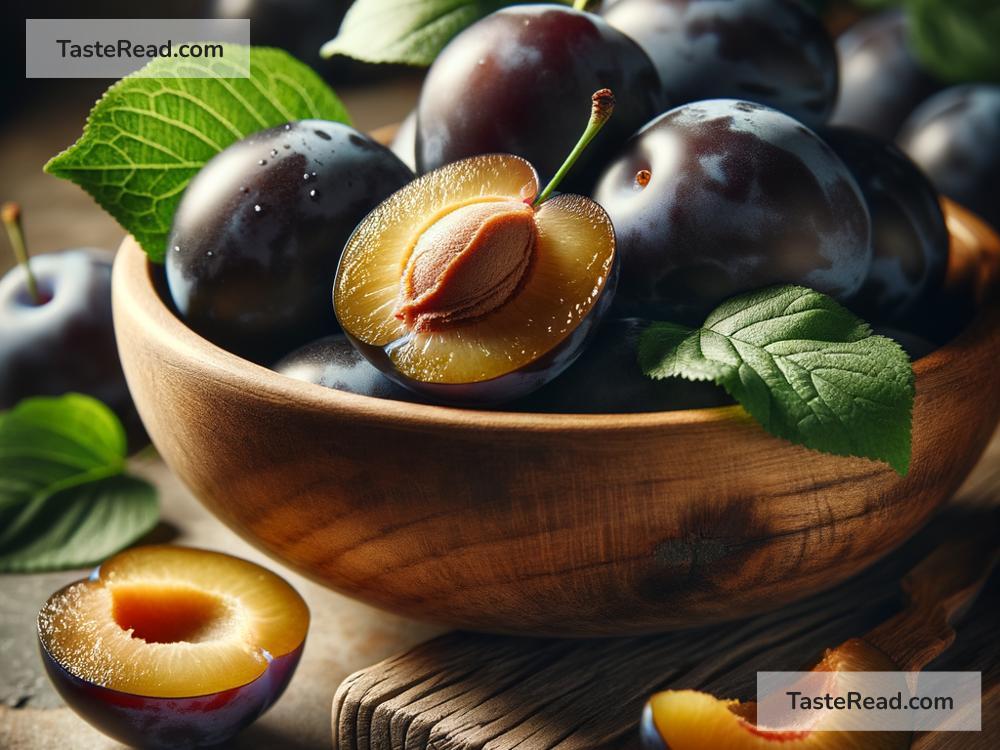The Truth About Plums and Their Tartness
Have you ever bitten into a plum and felt a tangy, sour zing on your tongue? If so, you might have wondered: why are some plums so tart? Are plums supposed to taste this way? What makes them sweet or sour? Let’s dive into the truth about plums and their tartness in this easy-to-read blog.
What Are Plums?
Plums are juicy, round fruits that come in many different colors, sizes, and flavors. They belong to the same family as peaches, cherries, and apricots, known as the “stone fruit” group, because of the hard pit inside. Plums can be red, purple, yellow, green, or even black. They are grown all over the world, and people eat them fresh, dried (like prunes), or even cooked in desserts or sauces.
Plums are loved for their flavor, which can range from sweet and sugary to tangy and sharp. But this flavor balance depends on many things, especially the type of plum and when it’s harvested.
Why Are Some Plums Tart?
The tartness of plums comes from organic acids, primarily citric acid and malic acid. These acids are naturally found in the fruit, giving it that slightly sour bite. Tartness is an important part of what makes plums unique, as it balances their sweetness and creates a refreshing and lively flavor.
But why do some plums seem much more sour than others? A few factors affect how tart a plum is:
- Plum Variety:
Not all plums are the same! There are thousands of types of plums grown around the world, and they fall into two main categories: - European Plums: These plums are often sweeter and less tart. They are commonly used for making prunes and baked goods. Some examples include “Damson” and “Greengage” plums.
-
Japanese Plums: These tend to be juicier and more tart. They are extremely popular for eating fresh. Varieties like Santa Rosa and Black Beauty often have a sharper tang.
-
Ripeness:
The ripeness of a plum plays a huge role in its taste. When a plum is not fully ripe, it will have higher levels of acid and less natural sugar, making it taste sour. As the plum ripens, its sugar content increases and its tartness softens. A fully ripe plum is much sweeter, though it may still hold a hint of tanginess for depth. If you’ve ever eaten a plum that was too sour for your liking, it was probably picked too early. -
Growing Conditions:
Climate and how the fruit is grown also influence its flavor. For example, plums grown in warm, sunny regions tend to develop more sugars, making them sweeter. On the other hand, plums grown in cooler places may retain more of their tartness.
Should Plums Be Sweet or Tart?
There’s no right or wrong answer to this question—it all depends on personal preference. Some people love plums that are supersweet, while others enjoy the refreshing bite of a tart plum. The best part is that the world of plums offers a variety to suit everyone’s tastes.
If you prefer sweeter plums, look for types like “Black Amber,” “Elephant Heart,” or fully ripened European plums like “Mirabelle.” If you like a bit of tangy zing, Japanese plums like “Satsuma” and “Redheart” are perfect for you. Over time, you’ll figure out which types you like best.
How to Pick the Right Plum
If you’re shopping for fresh plums and want to avoid the overly sour ones, follow these simple tips:
-
Check the Color:
A ripe plum often has deep, rich coloration. For instance, black plums should look a dark purplish-black, while red plums should be vibrant red. -
Feel the Fruit:
Gently press the plum with your fingers. A ripe plum will feel soft but not mushy. Hard plums tend to be under-ripe and more tart. -
Smell the Plum:
A ripe plum will have a sweet fragrance. If it doesn’t smell like anything, it might not be ready to eat yet. -
Ask About the Variety:
If you’re at a farmer’s market or talking to someone knowledgeable, ask for advice on plum varieties. They can often tell you which ones are sweeter or tarter.
How Tartness Can Be Enjoyed
Even if tart plums aren’t your favorite for eating fresh, they can be amazing in recipes. Their tangy flavor adds a pop of brightness to dishes like jams, chutneys, or tarts. Tart plums also pair well with savory foods, like roast meats or salads. If you want to turn a sour plum sweeter, try adding honey or sugar in your cooking to balance the flavor.
Final Thoughts
Plums are wonderful fruits that can be sweet, tart, or somewhere in between. Their unique flavor is influenced by their variety, ripeness, and growing conditions. Whether you love them tangy or prefer them sugary, there’s a plum out there for you. The truth is, plums are versatile and delicious no matter how you enjoy them.
So the next time you bite into a plum, take a moment to savor its flavor—whether sweet or tart—and appreciate the journey it took to make it to your plate.


